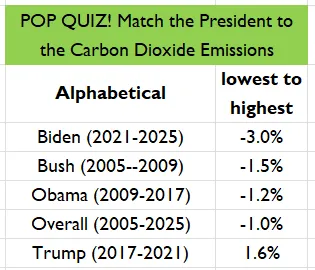https://www.wsj.com/articles/climate-alarmists-bad-science-warming-temperature-05846239
By David Barker
I debunked research by the Federal Reserve and top academic economists on the economics of climate change. An author of a paper I debunked then said that three professors from Stanford and Berkeley had done a much better analysis of temperature and growth in an article they published in Nature. I took up the challenge and scrutinized their article. My critique appears in the latest issue of Econ Journal Watch.
The Nature article is in the top 0.1% of academic economics publications by citations, and it has received glowing press coverage. I downloaded their data and found that, as with the other articles I debunked, the results don’t hold up under scrutiny.
The authors claim that there is an optimal average temperature of 55.5 degrees Fahrenheit for economic growth. Countries colder or warmer than that grow more slowly. The authors then use one of the most extreme Intergovernmental Panel on Climate Change estimates of warming up to the year 2100 and calculate for each country how much more or less growth that warming would cause. They then calculate the difference in world gross domestic product with warming and without.
Greenland, with an average temperature of 25 degrees, would benefit from warming. The U.S., average temperature 56, would be relatively unaffected. Niger, average temperature 83, would see lower growth from warming. Adding up all countries, the authors say warming would reduce world GDP per capita by 23%.
Every country, from St. Vincent in the Caribbean to China has the same influence on their result. Weighting by population nearly eliminates that result, and adjusting for correlated observations and dropping one or two unusual observations eliminates it completely. The observations aren’t independent, because countries clustered in regions and observations close in time have similar patterns of growth and temperature. An example of an unusual observation is Greenland in 1990. A large mine that generated 12% of Greenland’s GDP closed that year, and not because it happened to be 2 degrees cooler than normal.
Rather than uncovering a consistent relationship between growth and temperature around the world, their results are driven by relatively few countries. Dropping Greenland and a group of contiguous northern and central African countries, for example, eliminates the practical and statistical significance of their results.
The authors claim that there is no tendency for their results to diminish over time, because they find that the results for 1961-89 and 1990-2010 are similar. But changing the cutoff year to 1990 instead of 1989 changes this conclusion, because the data from 1991-2010 show no statistically significant relationship between growth and temperature. Because some countries are missing data from early years, a cutoff of 1990 would do a better job of matching the number of observations between the two periods. There is also evidence that if a result is present at all, it is completely reversed the following year.
I also produce simulated data with random numbers representing temperature and growth that are correlated by region, but with no relationship between temperature and growth. I find that the authors’ method is likely to indicate a statistically significant relationship even though the data are constructed to have no such relationship.
The authors have been invited to reply to my critique. On my previous three critiques, the commented-on authors didn’t reply.
Why do such qualified and clever economists write such bad papers, and why do top journals publish them? Economic growth, compounding year after year, can far outstrip the effects of climate. But to inflict their agenda, climate alarmists need to show that warming will reduce economic growth. They need to show that GDP growth itself is significantly reduced by higher temperatures to press for gigantic government subsidies and controls.
The law of supply and demand applies to tomatoes and also to ideas. Demand for research that bolsters arguments for bad policy leads to supply of research. Truth provides some constraints but doesn’t always prevail.
Fortunately, such publications as Econ Journal Watch give a platform to researchers who challenge reigning propaganda. More academics and independent researchers are uncovering bias, fraud and plagiarism, bringing a bit of discipline to a field greatly in need of it.


